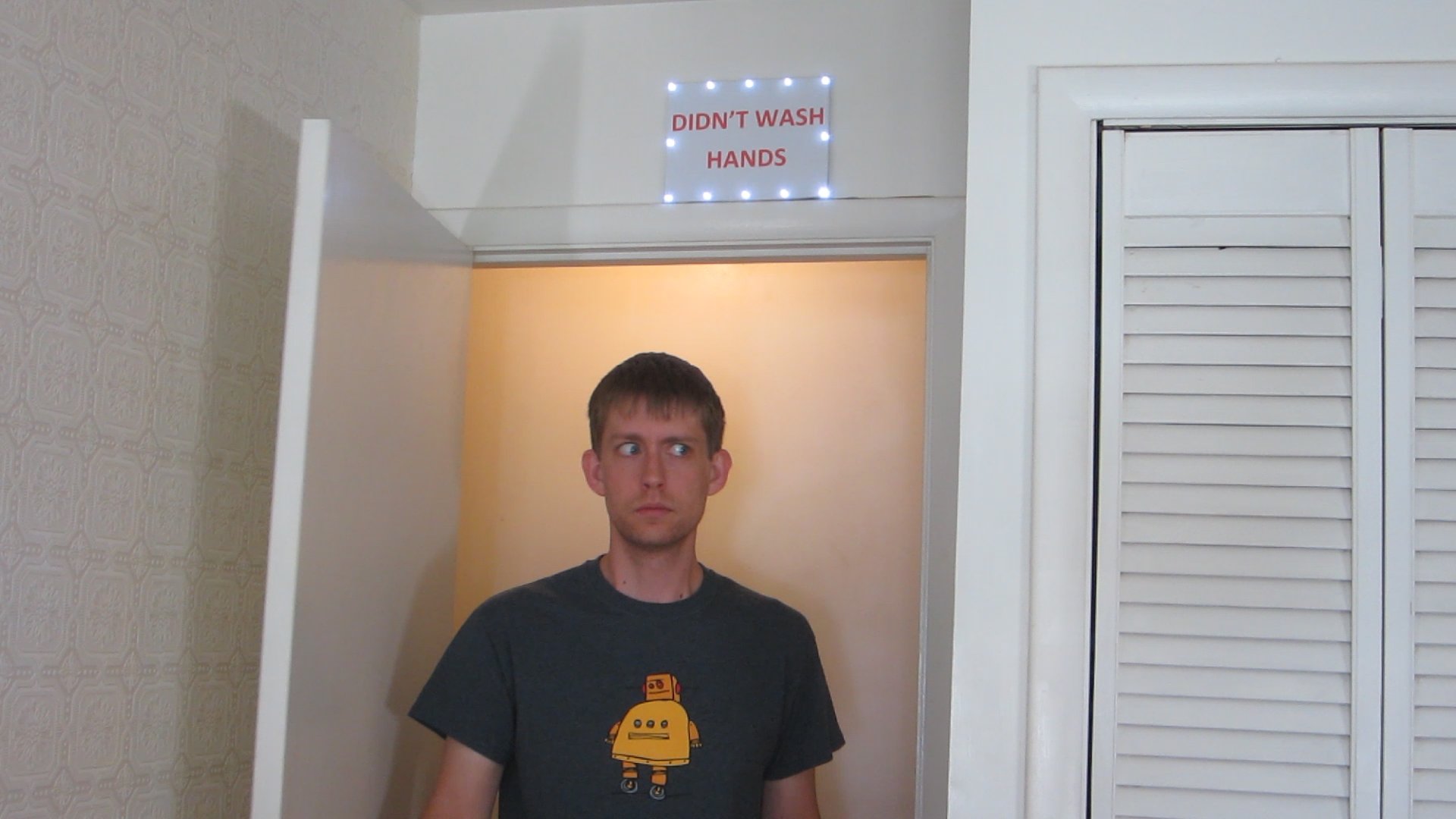The alarm can be anything that you can dream up. I decided to use both a buzzer and lights around a sign.
First I printed out a “Didn’t Wash Hands” label on my printer. Then I cut several pieces of cardboard so that they were a little smaller than the paper. I attached the cardboard and paper with glue and folded the paper around the sides.
Next I decided where to mount the LEDs. At each location I poked holes for the leads of the LEDs. Then I inserted the LEDs and bent the leads down so that they were flush with the back of the board.
The LEDs are powered by the same 9 volt battery that powers the microcontroller. Because the LEDs run on 3 volts, I wired them together in groups of three LEDs in series. This lets me leave off the series resistor that you would normally need for an LED.
The buzzer is connected in parallel to the LEDs. It can be mounted anywhere that is convenient. You can attach it to the back of the sign or next to the sign or wherever.
The alarm is activated by a single power transistor. The negative terminals of the battery pack is connected to the GND pin on the microcontroller. Then the output pin on the microcontroller is connected to the base of the transistor. When the microcontroller sends a HIGH signal to the transistor it turns on the lights and the buzzer.




